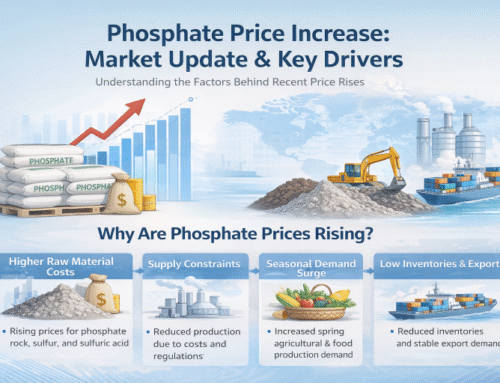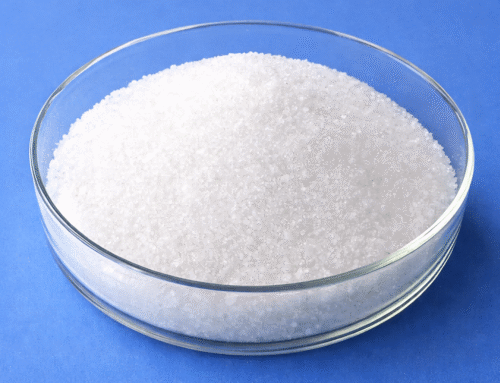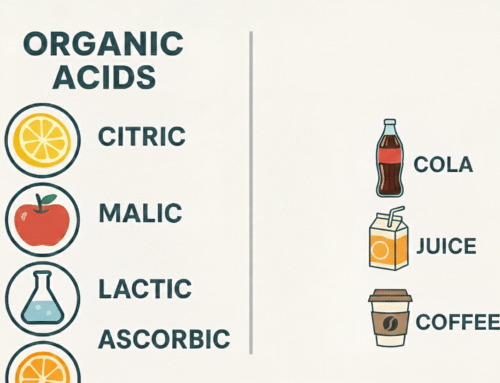E339 is a food additive that is assigned a European Union (EU) E number. It refers to the compound sodium phosphate, specifically sodium orthophosphates. E339 is a group of salts derived from phosphoric acid, and they are used as food additives for various purposes.
Normally, E339 food additives represent the following material:
Trisodium Phosphate E339(iii).
| Items | E339(i) | E339(ii) | E339(iii) |
|---|---|---|---|
| Formula | NaH2PO4 | Na2HPO4 | Na3PO4 |
| Molecular weight | 119.98 g/mol | 141.96 g/mol | 163.94 g/mol |
| HS Code | 28352200 | 28352200 | 28352910 |
| CAS No. | 7558-80-7 | 7558-79-4 | 7601-24-9 |
| Appearance | White powder or granules | White powder or granules | White powder or granules |
| Solubility | Soluble in water | Soluble in water | Soluble in water |
What Are Their Functions?
As we know that E339 included 3 types of sodium phosphate. Let’s discuss them one by one:
Monosodium Phosphate E339(i)
pH Regulation: E339(i) acts as a pH regulator and buffer. It helps control and adjust the acidity or alkalinity of food products, maintaining the desired pH level. This pH control contributes to the stability and sensory attributes of the final product.
Buffering: E339(i) functions as a buffer, preventing drastic changes in pH when acids or bases are introduced. It helps maintain a stable pH over a range of conditions, which is important for preserving the quality and consistency of the food or beverage.
Emulsification: While not its primary function, E339(i) can contribute to the emulsification of certain food products. It helps stabilize emulsions by reducing the interfacial tension between oil and water phases, improving the stability and texture of the final product.
Texture Improvement: E339(i) can enhance the texture of food items by improving their moisture retention properties. It can help prevent dryness and maintain desired texture, particularly in processed meats and baked goods.
Sequestration: E339(i) exhibits sequestration properties, binding with metal ions present in food formulations. This sequestration action helps maintain product stability by inhibiting undesirable reactions caused by metal ions, such as oxidation or color changes.
Disodium Phosphate E339(ii)
pH Regulation: E339(ii) acts as a pH regulator and buffer. It helps maintain the desired acidity or alkalinity level in food products by resisting changes in pH caused by acids or bases. This pH control helps preserve product stability and desired sensory attributes.
Buffering: E339(ii) functions as a buffer, maintaining a stable pH over a range of conditions. It helps prevent significant fluctuations in pH, ensuring consistent product quality and texture.
Emulsification: E339(ii) is known for its emulsifying properties. It helps stabilize emulsions by reducing the surface tension between the oil and water phases. This improves the stability and texture of emulsified products, such as dressings, sauces, and processed meats.
Texture Improvement: E339(ii) can contribute to texture improvement in food products. It enhances moisture retention, which helps improve the tenderness and juiciness of processed meats and baked goods.
Sequestration: E339(ii) exhibits sequestration properties, binding with metal ions present in food formulations. This sequestration action helps prevent unwanted interactions and reactions caused by metal ions, such as oxidation or color changes, contributing to product stability and quality.
Calcium Inhibition: E339(ii) stabilizes products by inhibiting the formation of calcium crystals or salts. It prevents the undesirable precipitation or crystallization of calcium ions, which can affect the texture, appearance, and stability of the formulation.
Trisodium Phosphate E339(iii)
pH Regulation: E339(iii) acts as a pH regulator and buffer. It helps maintain the desired acidity or alkalinity level in food products by adjusting and stabilizing the pH. This pH control contributes to product stability and sensory attributes.
Buffering: E339(iii) functions as a buffer, maintaining a stable pH over a range of conditions. It helps resist significant changes in pH, ensuring consistent product quality and texture.
Emulsification: E339(iii) can contribute to emulsification in certain food products. It helps stabilize emulsions by reducing the surface tension between oil and water phases, improving the stability and texture of the final product.
Sequestration: E339(iii) exhibits sequestration properties, binding with metal ions present in food formulations. This sequestration action helps prevent undesirable interactions and reactions caused by metal ions, such as oxidation or color changes, contributing to product stability and quality.
Cleaning and Sanitizing: E339(iii) is also used outside of food applications as a cleaning and sanitizing agent. It has strong alkaline properties that make it effective in removing dirt, grease, and stains from surfaces.
Metal Ion Stabilization: E339(iii) can also stabilize certain metal ions in formulations. It can help prevent undesirable reactions or interactions between metal ions and other components in a product, thereby maintaining its stability and performance.
To summarize:
E339(i) is primarily used for pH regulation, buffering, and sequestration.
E339(ii) is widely used as a stabilizer due to its versatility, including pH regulation, buffering, emulsification, texture improvement, sequestration, and calcium Inhibition.
E339(iii) is also used for pH regulation, buffering, emulsification, sequestration, and metal Ion stabilization, and it has additional applications in cleaning and sanitizing products.
Which one is More Suitable When Used as a Stabilizer?
 Among E339(i), E339(ii), and E339(iii), E339(ii) is generally considered more suitable as a stabilizer. Here’s why:
Among E339(i), E339(ii), and E339(iii), E339(ii) is generally considered more suitable as a stabilizer. Here’s why:
Versatility: E339(ii) is a widely used stabilizer due to its versatile functionalities. It offers pH regulation, buffering, emulsification, and sequestration properties, making it suitable for a wide range of food and beverage applications.
pH Control: E339(ii) has a stronger buffering capacity compared to monosodium phosphate and trisodium phosphate. It can effectively stabilize and maintain the desired pH level in food products over a broader range of conditions.
Emulsification: E339(ii) exhibits superior emulsifying properties, allowing it to stabilize oil-water emulsions effectively. This property is particularly important in applications where emulsion stability is desired, such as dressings, sauces, and processed meats.
Regulatory Acceptance: E339(ii) has a long history of safe use in food and is generally recognized as safe (GRAS) by regulatory authorities. It is approved for use in various countries and complies with regulatory guidelines.
While both E339(i) and E339(iii) have their own applications and benefits, disodium phosphate is more commonly used and offers a broader range of stabilizing functions, making it a preferred choice for many food and beverage formulations.
Is E339 Food Additive Dangerous?
E339(i), E339(ii), and E339(iii) are generally recognized as safe (GRAS) and approved for use in food by regulatory authorities when used within the specified limits.
When used as food additives in accordance with regulatory guidelines, E339 is considered safe for consumption. However, it’s important to note that individual sensitivities and allergies can vary, and some people may have specific reactions or intolerances to certain food additives. Additionally, excessive consumption of foods containing E339 may lead to an imbalance in mineral intake, as these additives contain phosphorus, which should be consumed in moderation as part of a balanced diet.
As with any food additive, it’s recommended to follow the recommended usage levels and consult with healthcare professionals or regulatory authorities if you have specific concerns or health conditions.
It is crucial to be aware of specific regulations and classifications. Although E339(iii) is a safe food additive under the approval of the FDA and European Union, In some cases, E339(iii) is classified as dangerous goods during sea transport in China. If you need to import E339(iii), consult with the supplier first.
In conclusion, by understanding the functions and applications of E339 compounds, manufacturers can make informed decisions regarding their use as stabilizers in food products, ensuring product stability, quality, and compliance with regulatory standards.
Overall, E339 compounds provide valuable stabilizing properties to a wide range of food and beverage products, contributing to their taste, texture, and overall stability, thereby enhancing the consumer experience.




